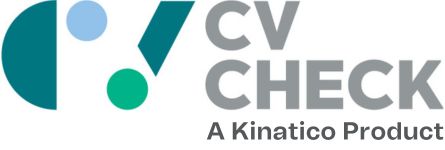With recruiters increasingly measured on their ability to make top-quality hires in ever-shorter timeframes, they are beginning to turn to intelligent automation to streamline simple but time-consuming hiring activities. Neil Kinnaird, Co-founder, and Chief Commercial Officer at Zimpla.ai explains the most valuable ways AI can be used to improve recruitment processes and employee retention.
Artificial intelligence is already disrupting business. Gartner – a global research and advisory firm – estimates that by 2021, a whopping 70% of organisations will be harnessing AI to improve employee productivity. There’s a strong demand for automation in recruitment, inciting employers to implement AI-based tech to support, augment and even negate certain employee tasks.
When implemented successfully, AI can remove a number of repetitive talent acquisition tasks, many of which inhibit the recruiter’s ability to offer candidates a more personalised, human-centric experience.
“AI should be seen as a technology that enables and augments recruitment, not replace it,” Neil begins.
“There are now AI capabilities that can deliver efficiencies and improvements across most of the recruitment workflow, allowing recruiters to get to the real value of person to person interaction quickly.
“Recruitment is a humanistic industry, so giving talent professionals more time for human interaction is a significant benefit to the industry as a whole.”
Here are 4 tasks AI can certainly help recruiters with:
1. Candidate sourcing
Companies want to ensure that only the most relevant candidates are put through to their recruitment teams.
Chatbots are allowing this to happen more efficiently than ever. Using AI, they ask candidates pre-interview screening questions based on their experience, knowledge and skills. They collect basic information about applicants and can answer frequently asked questions about the role, company, workplace benefits, or culture, for example. Today’s chatbots can even schedule interviews. They mimic human conversations using AI and natural language processing.
SmartAI, for example, is a fully customisable Australian-designed chatbot. It can field hundreds of candidate questions at any time, connect to CRM software to give candidates up-to-date information relating to their application, advise candidates of interview times, changes in appointments, interview locations and even provide maps for directions. It can re-engage with a candidate database, advising of new opportunities, and updating candidate profiles.
2. Candidate rediscovery
The point of screening resumes using AI is to save recruiters time and money, allowing them to devote more energy on human-facing responsibilities. But why limit this task to sourcing from an external pool when your ideal candidate could be sitting in your existing database?
Zimpla, for example, can help save considerable advertising costs by rediscover talent already known to your company across your existing database.
“Our APIs can connect to any data source,” Neil explains. “We already integrate with JobAdder and SmartRecruiters but because we have an open API, our solution can connect with any preferred ATS.”
Roborecruiter can re-invigorate your existing database by automatically updating previous candidates’ information – including new job positions, availability, newly gained skills and more. It also speeds up the recruitment process by engaging thousands of candidates around the clock, responding to every applicant instantly on various messaging platforms.
3. Resume screening
According to a recent survey, almost half of the resumes received for a job are from underqualified candidates, and a recruiter spends an average 23 hours screening resumes for each role.
Zimpla can also scan over 300,000 resumes in 10 seconds, cutting 85% or more on the time and cost of candidate screening. The tech offers to replace generic keyword searches with a combination of machine learning algorithms and natural language processing to find patterns of similarity, intent and context when matching candidates to roles.
“This means that you don’t need to have the exact word or phrase to find the best fit within the terms for which you’re searching,” Neil explains.
“The context of language can be used to understand how skills have been applied to roles, therefore, understanding if a candidate is well-suited to a role based on their experience, and not based on having the right keyword, in their resume. We match talent to roles, and do it quickly, accurately and without subconscious bias.”
However, it’s also been found that AI algorithms can still make errors if not trained correctly. Zimpla has a continuous feedback loop that delivers data from the user back to the AI system, meaning the platform is constantly learning what a good candidate looks like while protects again bias – ignoring demographic information such as gender, race and age.
Ideal accelerates the resume screening process by learning about the job requirements from an ATS, then ranking resumes based on what it’s learned about the skills and traits of previous successful hires. Resume data can be further enriched by information from public sources, such as candidates’ previous jobs and social media.
4. Onboarding and employee retention
There’s no point investing in a more efficient, candidate-friendly recruitment if the onboarding experience is lukewarm. By working together with the HR department, recruiters can ensure the expectations set during the recruitment process are met when the new employee finally comes into the fold.
HROnboard automates many of the repetitive and tedious manual tasks associated with hiring and onboarding new staff. For example, it creates digital job offers and other essential new-hire documents such as contracts, superannuation and tax forms, company policies and so on. These are sent to new employees prior to their start date according to a pre-determined schedule, then returned digitally by the candidate and sorted by the software. This frees up HR, allowing teams to tend to human-centric tasks and allows new hires to hit the ground running on day one.
ScopeSuite also automates the delivery of necessary paperwork and company resources to new hires. It gives employers unique insights into the competency and workplace experiences of staff by combining performance and education metrics with employee and management feedback.
While AI can be an amazing enabler for recruiters who need to streamline their workflow, the technology is still in its early stages of mainstream adoption in Australia and doesn’t always put the candidates first. Talent needs to first be engaged before being asked to hand over their valuable time and data.
“We are a people-based society, and it is important to implement AI in a relevant and effective way that is complemented with human interaction,” recommends Neil.
While not everyone is on board with the latest tech trends just yet, the widespread, mainstream adoption of AI is now just a matter of time.




